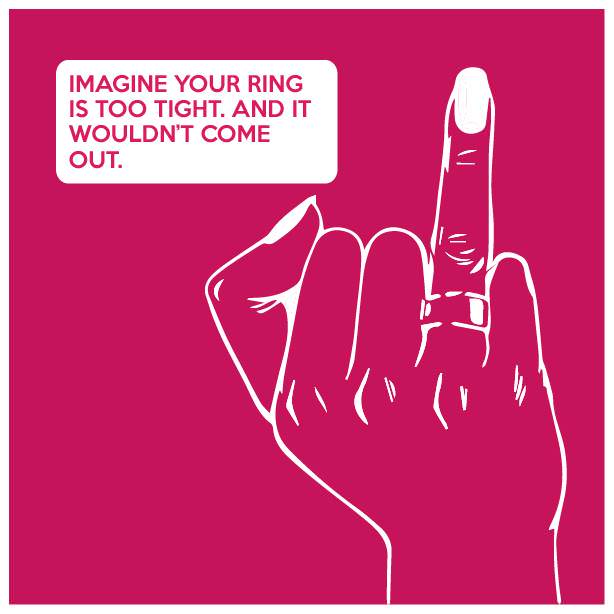Recently, there was a poster series by The Pink Auto that was aimed at apparently sensitising people (read: cis gendered males) about why rapes are wrong! When I saw this poster series, I cringed on multiple levels. But most of all, it was because it was supposed to be feminist. This reminded me of the research on Rape Trauma Syndrome and how the focus was on one type of response post rape. Not showing these symptoms would mean that you were not assaulted or that one was lying. Both are dangerous assumptions to make since each woman reacts to violence in very different ways.
Leaving aside the glaring mistakes and assumptions made in the posters, the fact remains that rape is less about the act and more about the lack of consent. If the poster said, imagine someone is putting a ring on your finger without your consent and whether it was too tight, too loose or fit perfectly, it would still be rape, I would give it a million shares (if I could).
However, it is not enough to say that I have issues with it or that it is problematic, I realise. Hence I have decided to say exactly what are the factual errors this poster series has.
Rape is not about Peno-Vaginal Intercourse
First things first, rape isn’t only penile penetration into the vagina. The definition of rape was broadened to include much more by Criminal Amendment Act 2013. Insertion of a finger or an object into the vagina without consent is rape, as well. The penis, believe it or not, is not a weapon of mass destruction. Women can survive post an assault. Women can survive without having multiple and heinous injuries.
Vaginas are not dry
Next, vaginas are not dry. Dry vaginas can make walking difficult and can be a serious medical conditions. Vaginas by design are moist and lubricated most of the time. When the body senses threat, it can lubricate the vagina so that it doesn’t cause injuries. Does that mean rape didn’t happen? NO. Does that mean she enjoyed it? No. It just means that the body started protecting itself.
Also, it is very important to understand that different women have different reactions to rape. Some feel hurt, some are angry, some feel absolutely nothing. And all of these are natural reactions to rape.
It has to be noted that injuries during rape are actually quite uncommon and happen in very heinous assaults. This report by CEHAT, an organisation in Mumbai shows that in 94 cases analysed by them, only 37 (39%) had genital injuries, 20 (21%) had physical injuries and 32 (34%) had physical health outcomes at all. These were the outcomes, despite the fact that in 57 cases (65%), the survivor had reported within 24 hours of the assault.
More than anything, that post fell into the trap laid by patriarchy and that is of quantifying the assault. It is a manifestation of this that we ask doctors if rape happened or not (There is no scientific litmus test for that). It is also due to this that forensic evidence is considered sacrosanct.
We have to question ourselves of what images we conjure up when we hear of the rape of a woman or child. Is the image that of an emotionally distraught woman crying and unable to come to terms with what is happening? Are her clothes torn visibly? Blood or bruises everywhere? Is she in pain? More often than not this is what we expect of a perfect victim. We don’t like to think of Suzette Jordan, and refuse to call Jyoti by her name. Instead we keep referring to her as Nirbhaya. We prefer to have martyrs rather than survivors. Our own ideas of virginity, chastity, purity come into play.
We have to examine and re-examine our personal definitions of violence and of rape. If these personal definitions remain unchallenged and unchanged, it wouldn’t matter what the law says, what she was wearing, what she felt after the assault, how hurt she was – emotionally or physically.




